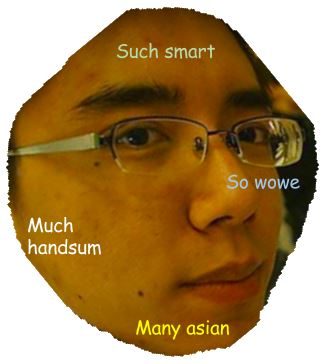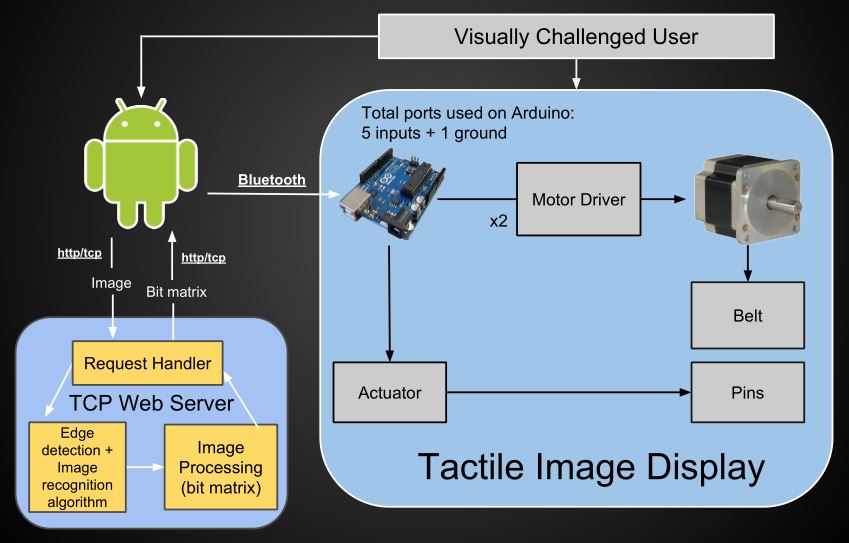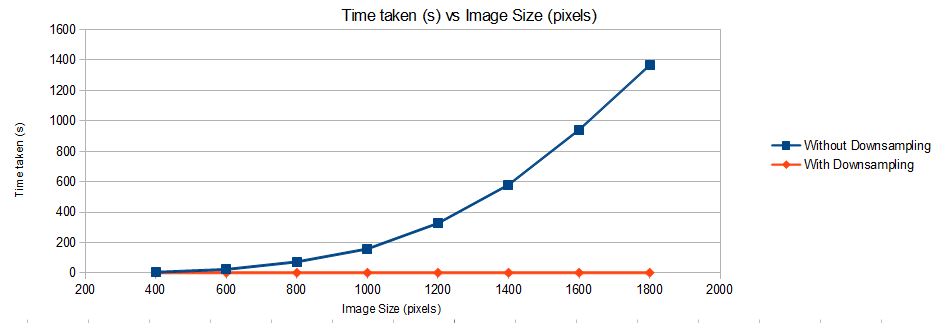

Our product will be a reconfigurable tactile image display that aids blind people in object visualization. The device takes computer images and converts them to a series of bumps so that blind people can "feel" the image.
Tactile Display Images exist for visually handicapped people to view images, but existing ones are permanent and expensive. Our design is reconfigurable and less costly, so many images can be displayed at different times on the same module.

| Risk | Mitigations |
|---|---|
| [Show Stopper] Lossy data from wireless transmission between phone and Arduino | Consider wired/serial connections Implement ECC in communication protocol |
| [Show Stopper] Pins may be pushed down by user’s fingers while reading. | Try out other pin shapes to make them lock better. |
| [Ancillary] Stepper motor does not have enough resolution. | Use gear ratios to achieve needed resolution Reduce tactile image resolution to place pins further apart. |
| [Ancillary] Pins may not be reset during shutdown / power supply may be cut abruptly. | User can ensure this by toggling off every ON pin at startup |
| Test # | Use Case | Test Sequence | Results |
|---|---|---|---|
| 1. Performance | User submits image to webapp | 1. Submit image to webapp 2. Measure runtime for image translation 3. Repeat for 9 more times and take average runtime |
Image processing algorithm works within a reasonable time (< 1 sec) - See graph below |
| 2. Startup | Device is powered up | 1. Plug in motor power supply 2. Plug in Arduino power supply to start device 3. Wait for harness heads to stop moving 4. Measure distance between ideal start position and actual head position |
No deviation - reset is good. |
| 3. Reliability | User prints out a lot of images before resetting device | 1. Power device up and allow reset to finish 2. Attach pencil to head 3. Repeat a square pattern for 20 iterations 4. Measure amount of deviation compared to original position |
Device is consistent with minimal deviation (< 4.3%) |
